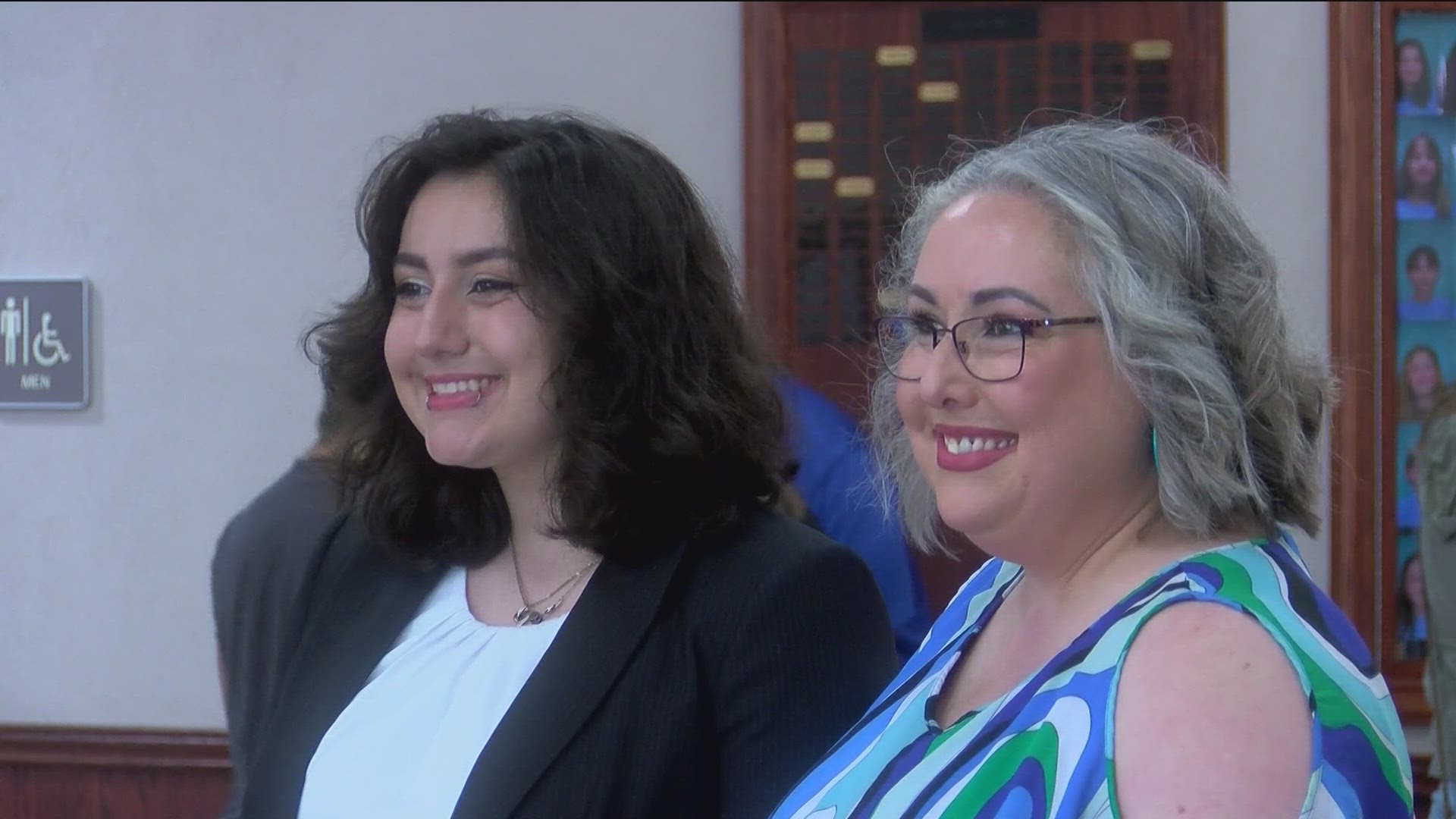MAUMEE, Ohio — It's a topic that's not often talked about. Mental health and suicide.
According to the CDC, someone takes their own life every 11 minutes. But a local teenager is trying to change that by sharing her struggle and her story.
"I started struggling with my mental health when I was 12, but I attempted suicide when I was 13 years old," Maumee High School sophomore Hala Jabri said.
She knew she needed help.
"It wasn't until I was 14, when I attempted suicide again, that I ended up asking for help," she said.
That was three years ago, she's now 16.
The person she turned to was her mom.
"I truly didn't realize how bad she was feeling until after she had already attempted suicide. She did eventually come to me and ask for help," her mother, Jennifer Campos said.
She says, like many parents, she just attributed her daughter's changes to moodiness and being a teenager.
It's something that the National Alliance on Mental Illness (NAMI) says is common.
Leaders there say mental health and suicide are a difficult topic to navigate, but one that's important.
"Suicide is the second leading cause of death for those ages 15-18," Sarah Gross, the family navigator at NAMI Greater Toledo, said. "So obviously it's a pressing issue and it's something that we need to address."
Knowing where to turn and who to turn to is just as important. That's why Maumee High School and NAMI of Greater Toledo partnered to raise awareness about youth and their mental health.
"Check in with your kids regularly about their emotions and how they're feeling," Campos said. "And talking about depression or suicide doesn't cause it."
Jabri says she's better now and has something to live for. She's helping the people who are her age, who might be suffering in silence.
"It's important that they get help because they shouldn't be just continuing to struggle. If they can get better, they should choose to get better," she said.
According to NAMI, there are several signs to look for:
Talking about:
- Wanting to die
- Great guilt or shame
- Being a burden to others
Feeling:
- Empty, hopeless, trapped, or having no reason to live
- Extremely sad, more anxious, agitated or full of rage
- Unbearable emotional or physical pain
Changing behavior, such as:
- Making a plan or researching ways to die
- Withdrawing from friends, saying goodbye, giving away important items or making a will
- Taking dangerous risks such as driving extremely fast
- Displaying extreme mood swings
- Eating or sleeping more or less
- Using drugs or alcohol more often
If you or someone you know needs help, contact the suicide and crisis lifeline at 988.
The 988 Suicide and Crisis Lifeline is a hotline for individuals in crisis or for those looking to help someone else. To speak with a trained listener, call 988. Visit 988lifeline.org for crisis chat services or for more information.
The Crisis Text Line is a texting service for emotional crisis support. To text with a trained helper, text SAVE to 741741. It is free, available 24/7 and confidential.
Local programs and organizations include:
- Arrowhead Behavioral Health
- Buckeye Health Plan
- Lucas County Suicide Prevention Coalition
- Lutheran Social Services
- Maumee United Methodist Church Youth Programs
- Mental Health and Recovery Services Board of Lucas County
- Mercy Health Toledo Trauma Recovery Center (TRC)
- NAMI Greater Toledo
- ProMedica Russell J. Ebeid Children's Hospital Pediatric Psychiatry Department
- University of Toledo Medical Center (UTMC)
- Willow Center
MORE FROM WTOL 11:

